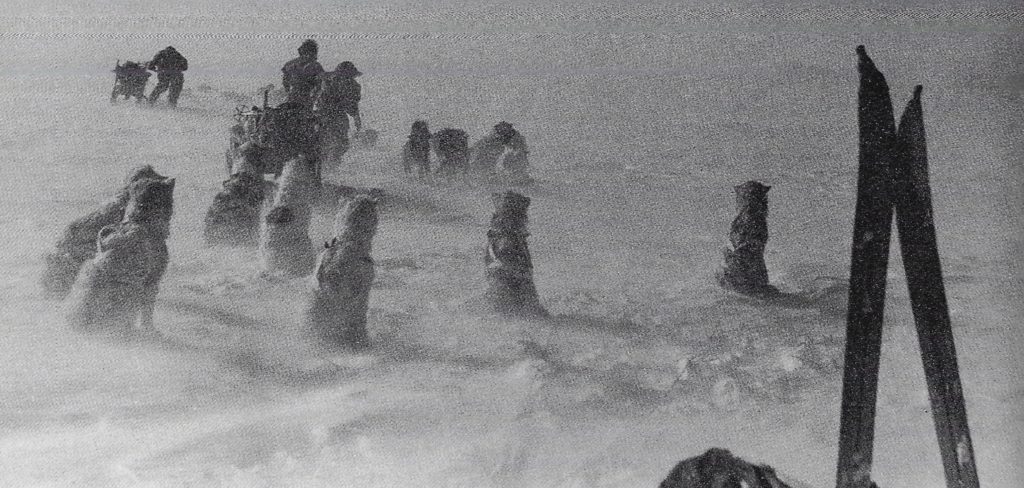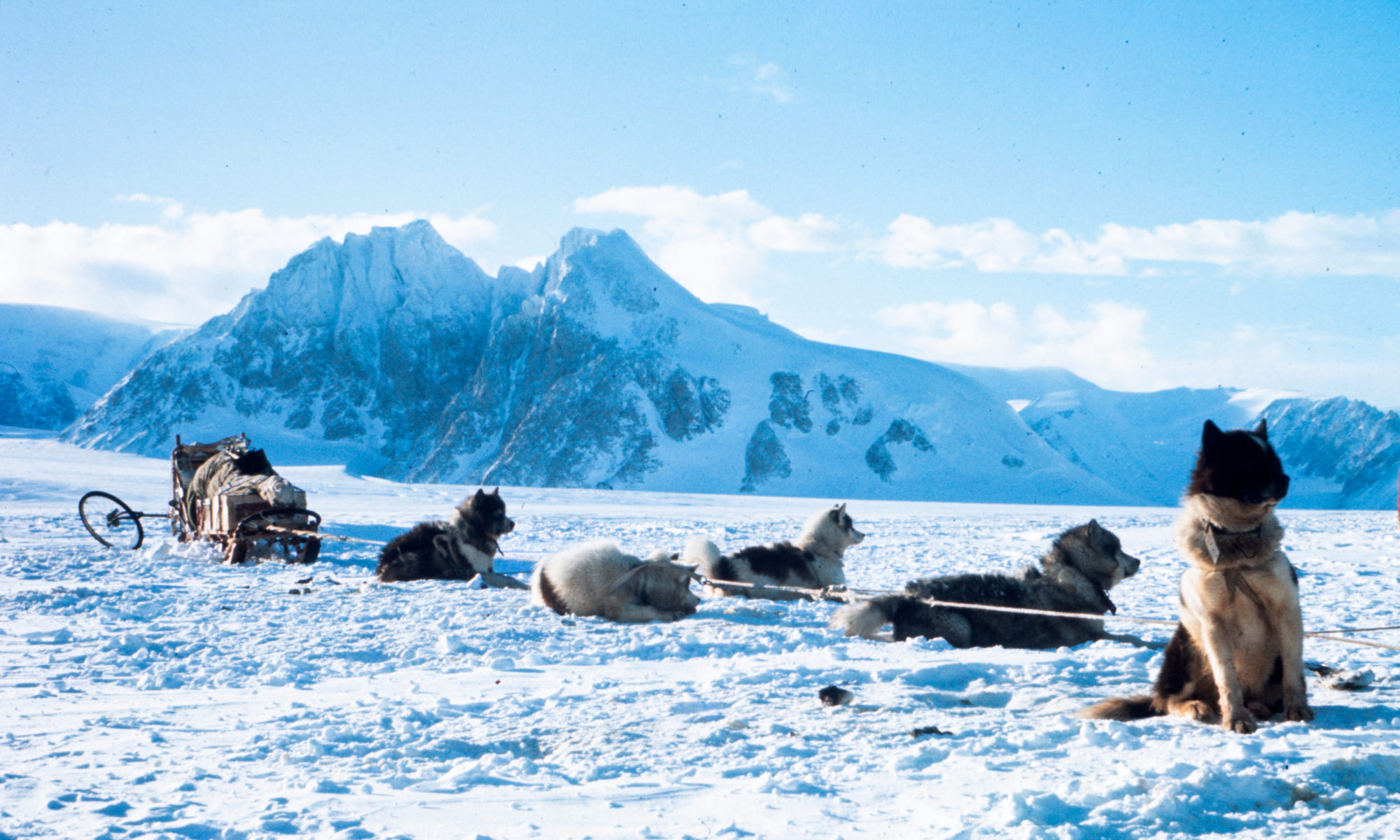Lessons From Accidents (continued)
As this was an area where there were no known crevasses John Tonkin went ahead to make a track and almost immediately disappeared from sight down a very narrow crevasse. How we got him out alive is another story, well described elsewhere, but it was a truly memorable day, remembered because we all realised how lucky we had been and it spurred us on to reach the standards of Dog Driving that Bingham demanded. Never again did we leave base without walking out a dog track for those critical first few hundred yards.
A year later in July 1947 when the Ronne Expedition was on Stonington Island we were all over at the American base watching the movies. Suddenly, Bob Dodson, who we thought was safely camped with “Pete” Peterson 15 miles away burst in. The two of them had been forced to abandon their camp because of the conditions and the failure of the tent; on the way down the glacier on foot Peterson had fallen into a crevasse 10 miles away up the Northeast Glacier.
It was a real emergency and after the Tonkin episode we FIDS had given much thought as to what equipment we would need and what we would do if another episode occurred.

(Photo: Harry Haywood)
Within 20 minutes we had loaded 3 of our sledges with all necessary safety equipment for survival in case the weather turned nasty and in addition, all the equipment by way of ropes, searchlights, blankets, tents and medical equipment needed for a rescue. Neither we nor our dogs had ever travelled at night and in darkness – it was bitterly cold and crystal clear without a trace of the wind that had rocked the base during the previous 24 hours. Once on the open glacier we followed our usual routine of very careful navigation using sledge wheel and compass to avoid the area of heavy crevassing only to realise the check compass bearings Bob had taken at the scene of the accident led us into an area which we would not dare to cross because of the heavy crevassing.
We had no option but to cross the bad area and take the risk. Three dogs went down, two were recovered but we were in a hurry so Lady, the team bitch, had to be abandoned. Driving the dogs in line abreast about 200 yards and using our searchlights to sweep either side we finally found Pete’s ski lying in the snow where he had gone down. In due course he too, was recovered alive and not seriously hurt despite falling over 120 feet. The night was still wonderfully clear, the dogs entered into the spirit of things with howling sessions and at daybreak we travelled back to base at full speed. Within 12 hours the wind was back at hurricane speed. The dogs had behaved impeccably and never put a foot wrong.
These were two memorable occasions and the dogs are an intrinsic part of those memories but it had been a close run thing both times. Far too close. From then on, until the base was finally closed 28 years later, the Northeast Glacier was always treated with great respect and no journey was ever considered finished until the dogs ran madly down the ramp without cutting corners and back on to the solid rock of Stonington Island.
Kevin Walton – GA, Stonington, 1946 & 1947

